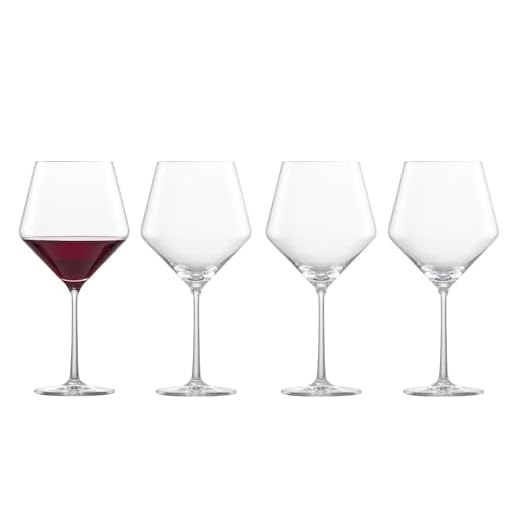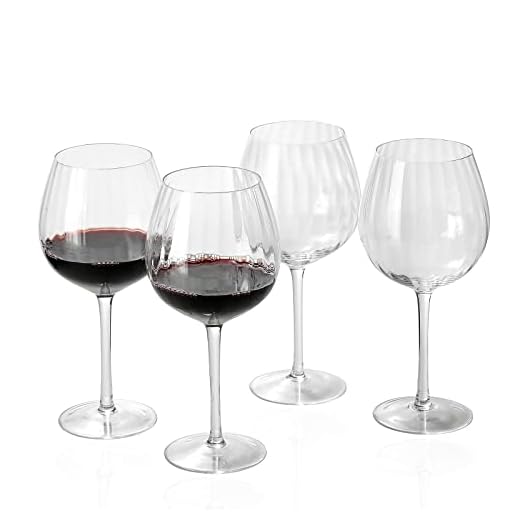



Pinot Noir stands at the forefront of the varietals that craft the distinguished offerings from this famed French region. This cultivar is celebrated for its ability to express terroir, showcasing a range of flavors from red berries to earthy undertones, depending on the specific vineyard and vintage conditions.
For those looking to explore alternatives or blends, consider Gamay, primarily known for its role in Beaujolais. While not as prominent in the heart of Burgundy, it contributes to lighter, fruit-forward expressions that can complement the more serious Pinot Noir. Understanding the nuances between these selections allows for a richer tasting experience.
When selecting bottles, pay attention to the specific village or vineyard designations. The distinctions between Côte de Nuits and Côte de Beaune, for example, can significantly influence the flavor profile and aging potential of the final product. This knowledge will elevate your appreciation and enjoyment of the nuanced offerings from this iconic wine-producing area.
Red Varietals for Exceptional Burgundy
The primary varietal responsible for crafting exquisite wines from this esteemed region is Pinot Noir. Its finesse and ability to express terroir make it a standout choice for both producers and enthusiasts alike.
Within this varietal, specific clones such as Dijon and Pommard exhibit distinct characteristics, contributing unique flavors and aromas to the final product. The grapes thrive in the clay-limestone soil, which enhances their aromatic profile and structure.
Additionally, while Pinot Noir remains dominant, some winemakers experiment with lesser-known varieties. For instance, Gamay, traditionally associated with Beaujolais, occasionally finds its way into blends, providing a lighter contrast with fruity notes.
| Varietal | Characteristics | Typical Flavor Profile |
|---|---|---|
| Pinot Noir | Elegant, complex, and versatile | Cherry, raspberry, earthy undertones |
| Gamay | Light-bodied, juicy, and fresh | Strawberry, banana, floral notes |
The careful selection of clones and specific vineyard sites plays a vital role in achieving the depth and complexity expected from these wines. Attention to detail during the vinification process, including fermentation techniques and aging, further elevates the final product.
For those seeking to explore this region’s offerings, I recommend looking for producers who prioritize sustainable practices and express the authenticity of their terroir. This approach often results in wines that are not only delicious but also reflective of their origins.
Pino Noir: The King of Burgundy
Pino Noir stands out as the preeminent variety in the esteemed region of Burgundy. This varietal displays a remarkable ability to express its terroir, resulting in nuanced and complex profiles that captivate enthusiasts. Its delicate nature requires meticulous attention during cultivation and vinification to yield exceptional results.
Characteristics and Flavor Profile
The flavor profile of Pino Noir ranges from red fruits like cherry and raspberry to earthy notes of mushroom and forest floor. Aged examples may reveal layers of spice, leather, and even floral hints. The balance of acidity and tannins creates a wine that can be both elegant and powerful, suitable for a variety of occasions.
Pairing Recommendations
This varietal pairs wonderfully with diverse dishes. Consider matching it with grilled salmon, roasted chicken, or mushroom risotto to enhance its flavor nuances. Its versatility makes it an excellent choice for both casual and formal dining experiences. For a delightful experience, serve it slightly chilled to accentuate its freshness.
In my journey as a Master Sommelier, I’ve encountered countless expressions of Pino Noir, each telling a unique story of its origin. Exploring these wines not only enriches one’s palate but also deepens appreciation for the craftsmanship involved in their creation.
Characteristics of Gamay in Burgundy Blends
Gamay possesses a unique profile that makes it a noteworthy component in various blends. This varietal is celebrated for its bright acidity and fruit-forward nature, often showcasing flavors of cherry, raspberry, and strawberry. The juicy characteristics lend a refreshing quality, making it an excellent companion to food.
The tannins in Gamay are typically soft and approachable, allowing for early consumption without the need for extensive aging. This ease of drinkability is one of its strongest appeals, particularly for those who enjoy lighter styles. In blending, Gamay can soften the boldness of other varietals, contributing balance and approachability to the final product.
In the cooler climates of Burgundy, Gamay tends to express more herbal notes, such as a hint of earthiness or floral undertones, which can enhance complexity. This versatility allows it to complement the structure of Pinot Noir while adding a delightful lift to the blend.
When evaluating a blend that includes Gamay, look for its role in enhancing the overall flavor profile. A well-crafted wine will showcase the lively fruitiness while harmonizing with the depth provided by other components. Experimenting with food pairings, such as grilled meats, salads, or even charcuterie, can highlight the refreshing qualities of this grape.
In summary, Gamay’s characteristics contribute significantly to the texture and flavor of blends, offering a unique perspective that elevates the overall experience. Embracing its qualities can lead to delightful discoveries in the world of fine beverages.
Other Varietals in Burgundy Production
For enthusiasts of the region, it’s essential to recognize the contributions of lesser-known varietals in the production of outstanding bottlings. While Pinot Noir takes center stage, other varieties also play significant roles in crafting memorable expressions.
One such grape is the Pinot Blanc, often used in blends to add a layer of complexity. Its bright acidity complements the fruit-forward nature of the dominant varietals, enhancing the overall profile. Similarly, the Pinot Gris offers a unique texture and aromatic depth, making it an intriguing choice for more adventurous winemakers.
Then, there’s the intriguing presence of the César variety. Though limited in cultivation, it has historical significance and can contribute tannic structure and earthy notes when included in blends. This grape’s rarity adds an element of excitement for collectors and connoisseurs alike.
Gamay, primarily associated with Beaujolais, finds its way into some Burgundy compositions, bringing vibrant fruitiness and a lightness that contrasts beautifully with the more robust styles. The balance achieved by integrating these varietals showcases the region’s versatility.
For those looking to enhance their experience with these wines, consider pairing them with local cuisine. A well-executed pairing can elevate the tasting experience significantly. Additionally, if you’re exploring personal care products, don’t overlook the best scrubber for men’s face to keep your skin fresh and vibrant.
Impact of Terroir on Red Varietals
The unique characteristics of a wine often stem from its terroir, which encompasses soil, climate, and topography. In regions where Pinot Noir thrives, such as Burgundy, the specific microclimates play a pivotal role in shaping flavor profiles. The cooler temperatures and varied altitudes contribute to the development of acidity and finesse in the resulting beverage.
For Pinot Noir, the limestone and clay-rich soils enhance its elegant structure, while the presence of iron in certain areas adds depth and complexity. In contrast, Gamay, often found in similar terroirs, benefits from slightly different conditions, favoring more fertile soils that yield fruit-forward expressions.
Proximity to water sources, such as rivers, can influence temperature regulation, creating a more stable environment for grape maturation. This effect is particularly noticeable in vintages that benefit from extended growing seasons, allowing for optimal ripeness without sacrificing acidity.
Specific vineyard practices also interact with the terroir. For instance, the choice of trellising systems and vine spacing can dictate sunlight exposure and airflow, further impacting the phenolic maturity of the berries. These decisions are crucial for maintaining the balance between sugar and acidity, which is vital for producing high-quality expressions.
Understanding the relationship between terroir and varietal expression is essential for any wine enthusiast. By appreciating how these factors interact, one can better select and enjoy wines that exemplify the true essence of their origin.
Vinification Techniques for Burgundy Red Wines
To achieve the distinctive character of these wines, several vinification techniques are employed, each contributing to the final profile of the product.
- Whole Cluster Fermentation: This method can enhance complexity and structure. By fermenting grapes with stems, one can introduce additional tannins and aromatic compounds, enriching the overall flavor.
- Cold Soaking: Prior to fermentation, some producers opt for cold soaking the must for several days. This process encourages the extraction of color and flavor compounds without excessive tannin extraction, resulting in a softer mouthfeel.
- Temperature Control: Maintaining optimal fermentation temperatures is critical. Cooler temperatures can preserve fruity and floral aromas, while warmer temperatures may enhance extraction and develop deeper flavors.
- Gentle Punch Downs: During fermentation, gentle punch downs rather than pump overs help to minimize harsh tannin extraction. This method allows for a more delicate integration of flavors from the skins.
- Oak Aging: The choice of oak barrels, often made from French oak, plays a significant role. Barrels can impart subtle spice, vanilla, and toast notes, while the age of the barrel influences the level of oak integration.
Each technique is carefully selected based on the desired outcome and the characteristics of the specific varietals. The interplay of these methods allows for the production of nuanced and elegant expressions that truly capture the essence of the terroir.
Food Pairings with Burgundy Red Wines
For an unforgettable dining experience, consider pairing Pinot Noir with roasted duck. The wine’s acidity and fruit notes beautifully complement the rich, savory flavors of the duck, enhancing each bite. Alternatively, a classic beef bourguignon matches seamlessly with this varietal, as the wine’s structure stands up to the hearty dish while bringing out its depth.
When enjoying Gamay, opt for charcuterie. The wine’s light body and vibrant fruitiness balance the saltiness and fat of cured meats, creating a harmonious blend. Additionally, it pairs excellently with mushroom risotto, where earthy tones in both dish and beverage elevate the overall flavor profile.
For a unique touch, consider serving a lighter blend with grilled salmon. The delicate flavors of the fish are complemented by the wine’s subtle tannins and berry notes, creating a refreshing combination. Also, roasted vegetables drizzled with balsamic reduction can enhance the wine’s acidity, making for a delightful pairing.
Finally, don’t shy away from enjoying these selections with a cheese board featuring Brie or Camembert. The creaminess of the cheese contrasts beautifully with the acidity of the wine, resulting in a satisfying mouthfeel that lingers pleasantly on the palate.








